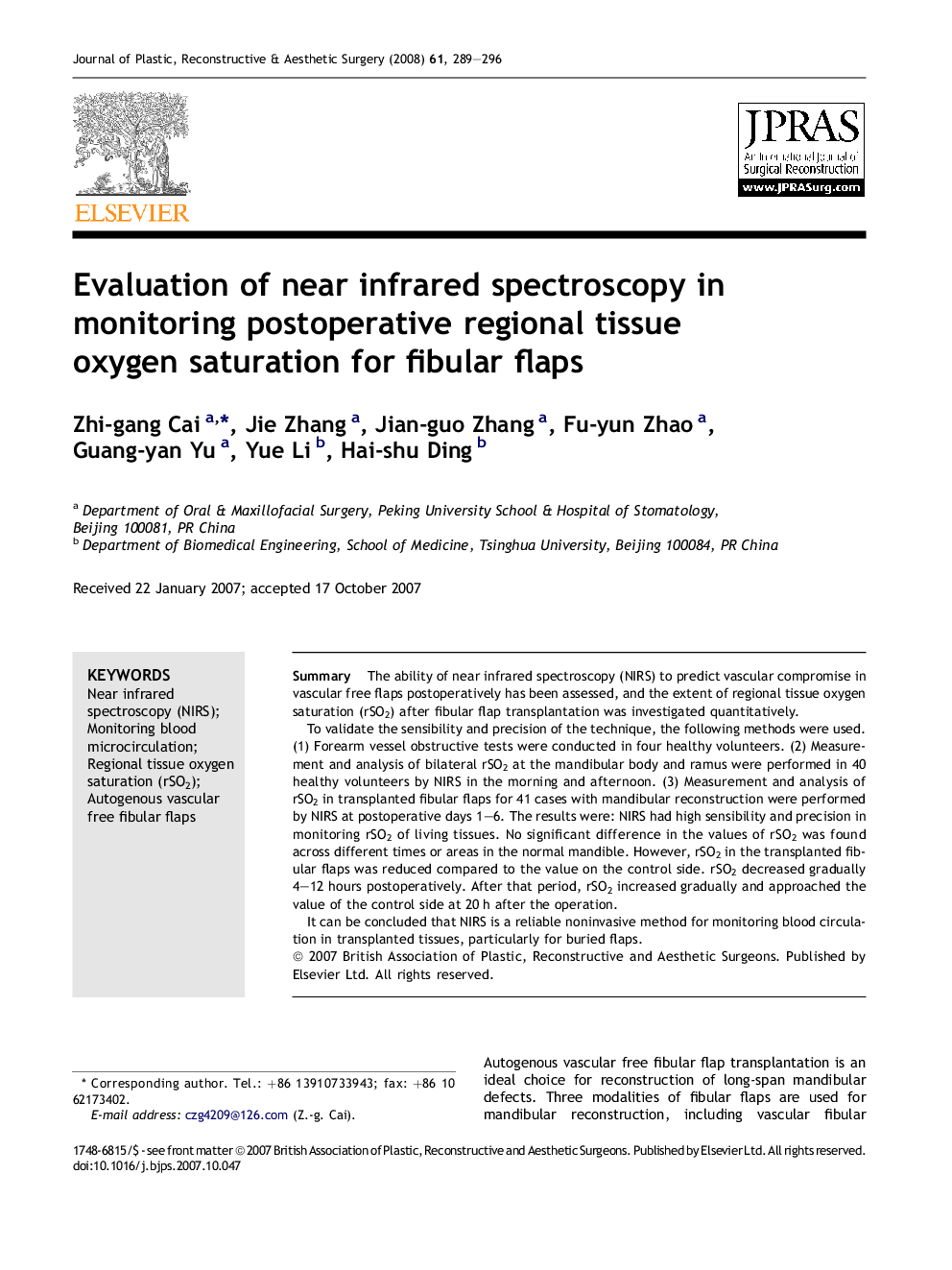| Article ID | Journal | Published Year | Pages | File Type |
|---|---|---|---|---|
| 4121139 | Journal of Plastic, Reconstructive & Aesthetic Surgery | 2008 | 8 Pages |
SummaryThe ability of near infrared spectroscopy (NIRS) to predict vascular compromise in vascular free flaps postoperatively has been assessed, and the extent of regional tissue oxygen saturation (rSO2) after fibular flap transplantation was investigated quantitatively.To validate the sensibility and precision of the technique, the following methods were used. (1) Forearm vessel obstructive tests were conducted in four healthy volunteers. (2) Measurement and analysis of bilateral rSO2 at the mandibular body and ramus were performed in 40 healthy volunteers by NIRS in the morning and afternoon. (3) Measurement and analysis of rSO2 in transplanted fibular flaps for 41 cases with mandibular reconstruction were performed by NIRS at postoperative days 1–6. The results were: NIRS had high sensibility and precision in monitoring rSO2 of living tissues. No significant difference in the values of rSO2 was found across different times or areas in the normal mandible. However, rSO2 in the transplanted fibular flaps was reduced compared to the value on the control side. rSO2 decreased gradually 4–12 hours postoperatively. After that period, rSO2 increased gradually and approached the value of the control side at 20 h after the operation.It can be concluded that NIRS is a reliable noninvasive method for monitoring blood circulation in transplanted tissues, particularly for buried flaps.
